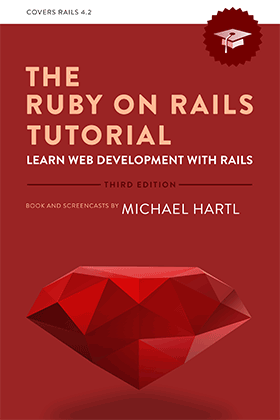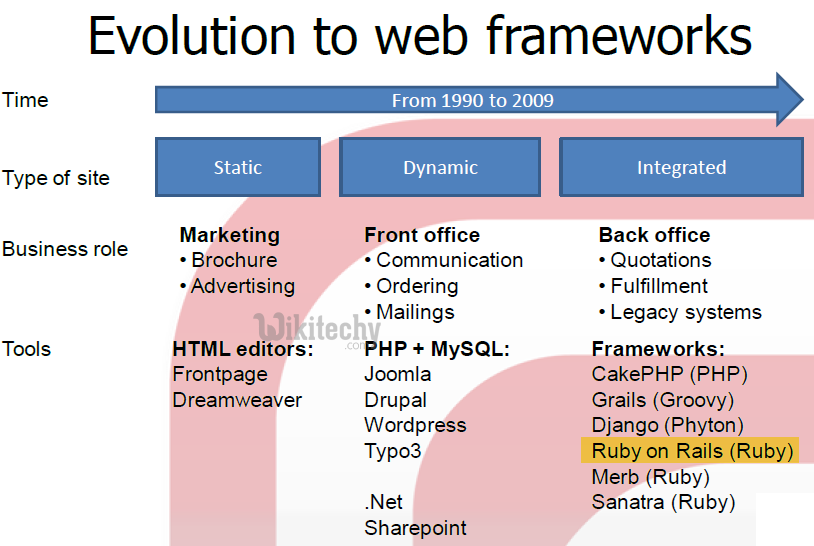
- #Textmate ruby on rails tutorial how to
- #Textmate ruby on rails tutorial install
- #Textmate ruby on rails tutorial registration
There is, however, some simple configuration that will further enhance your Rails development experience. This will start pulling down and compiling our list of packages.Īt this point you have all you need to hack on Ruby and Rails applications. Now evaluate the buffer again: (M-x) eval-buffer Drop the following configuration in your init.el: (setq el-get-sources (add-to-list 'load-path "~/.emacs.d/el-get/el-get")Īt this point it's a good idea to evaluate the init.el buffer and refresh the elpa package list, in Emacs: (M-x) eval-bufferĮl-get can use a number of package retrieval protocols. We can now add the following lines to our configuration to load ELPA w/ an alternate repository and el-get.
#Textmate ruby on rails tutorial install
Install el-get in the following manner: $ cd ~/.emacs.d It's also fundamental in making our quick configuration possible. So we'll configure Emacs to use the tromey repository.Įl-get is a new package management library written by Dimitri Fontaine. ELPA & el-get #Įmacs 24 comes with ELPA package management built-in, however, the default repository of libraries excludes many we will need. The first line changes the default font while the second line uses one of Emacs 24's new features: built-in themes. In the interest of aesthetics I will add two additional lines to our configuration: (set-frame-font "Menlo-16") We are pushing "/usr/local/bin" onto the exec-path list giving Emacs the ability to use git (presuming it's installed via hombrew and the binary resides in /usr/local/bin).

The most important bit of configuration is the first line. Navigate (C-x C-f) to ~/.emacs.d/init.el and insert the following after our singular comment at the top: (push "/usr/local/bin" exec-path) If you are new to Emacs consider taking the Emacs tutorial presented in the default splash screen.
#Textmate ruby on rails tutorial how to
You will be presented with the illustrious Emacs logo and some instructions on how to use the editor. So, go ahead and launch Emacs like you would any other application. That's ok! It only takes a few lines of elisp to make a more pleasant experience. Configuring The Basics #Īt the risk of editorializing I'll say that Emacs doesn't have the most desirable configuration defaults. This will leave you will a fresh copy of Emacs and a blank configuration file. I'd like to show you how you can go from a default installation of Emacs HEAD (24) to a workable Rails development environment in only a few minutes. So, I have no interest in engaging in any kind of editor holy war here. I strongly believe that everyone should use an editor they feel productive in and most importantly, an editor they enjoy. My fellow employees at Viget enjoy a number of different editors including Textmate and Vim. So, for the time being, TextMate will replace vim as long as I'm coding on my PowerBook.I'm a big fan of Emacs. There are a few nits (partially due to bugs, and partially TextMate's behavior that conflicts with some of my bad typing habits) that get to me, but I've adapted to all of them very quickly. I wanted to summarize the things I liked about it before I spent too much time with it, or else it'd likely take too long for me to scratch up this quick post about it.

It seems that every hour I spend with it, I learn something new to help speed me up. Here are the things I like about TextMate so far: Well-done Subversion integration Ability to build in Xcode, and provide clickable build output Live web view while editing HTML, which updates as you type Great built-in editing shortcuts for all the languages I use Automatic TODO list building (although it's a little slow for my FuzzMeasure directory) An automatic terminal shortcut out-of-the-box The ability to just open up a directory from the terminal - no need to make projects if you don't feel like it Aside from the list, my favourite overall thing about TextMate is its depth.
#Textmate ruby on rails tutorial registration
After about 20 minutes of use, I fired Allan my registration fee.

So, this time around, when I finally decided to give TurboGears a whirl for my new site, I decided to give TextMate another shot. Also, I didn't want to replace my perfectly-fine vi with something that would cost me $50. I played with it for a little while, and it didn't really meet all my needs at the time. When I originally found it, I thought it'd make a great non-vi editor to use for my web development, scripting work, and, maybe even Cocoa coding. I originally stumbled on TextMate a few months ago (or, possibly over a year ago - the last few years have just flown by for me). I watched both the Rails and TurboGears videos, and saw a good sample of TextMate in action. I made the standard tour around Ruby on Rails, django, TurboGears, and a few others.

Over the last few days, while taking a bit of a break from FuzzMeasure development, I started studying up on some web development frameworks to help me with modifications I plan to make to the site.


 0 kommentar(er)
0 kommentar(er)
